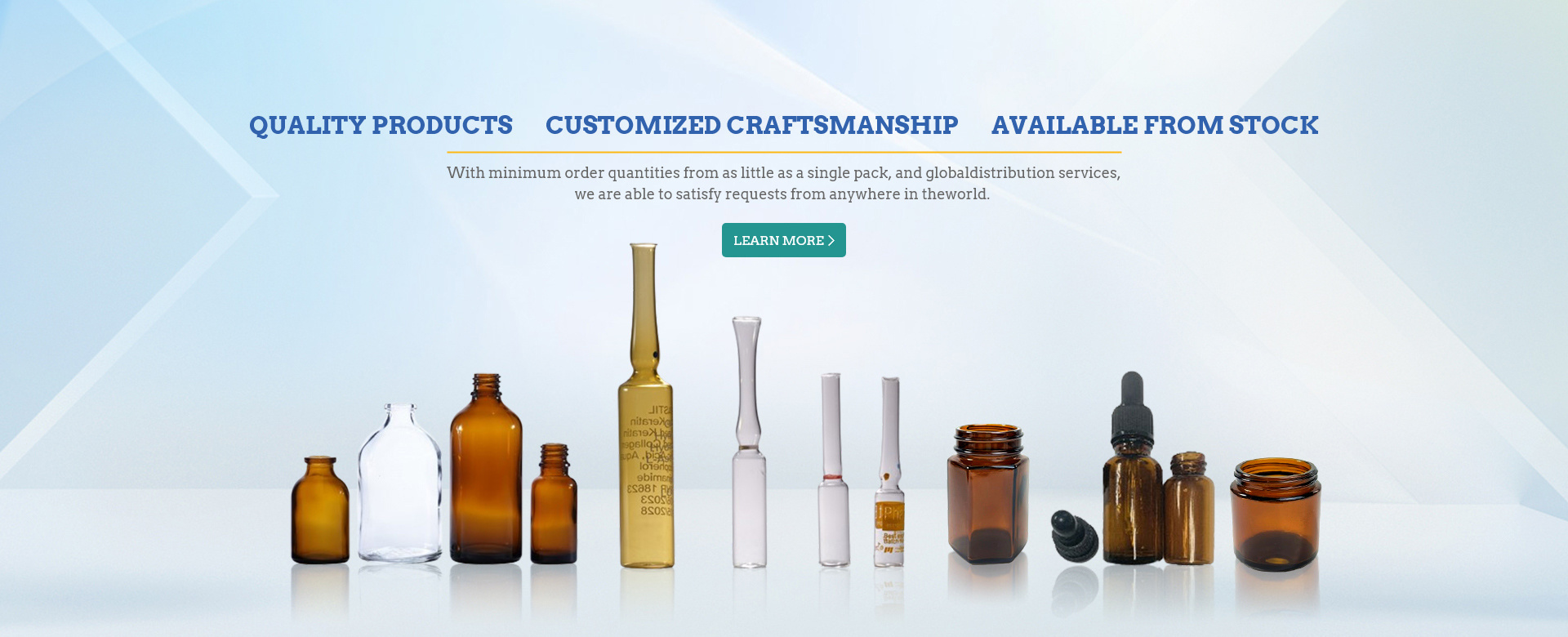Support customization and sample delivery!
Key Differences Between Pharmaceutical Glass Bottles and Plastic Ampoules
Author:
Munan Glass
Date:
2025-10-22
Read:
In the rapidly evolving world of drug packaging, the choice between “pharmaceutical glass bottles” and “plastic ampoules” is no longer a matter of tradition—it is a strategic decision that impacts patient safety, product stability, and supply-chain efficiency. Below, we unpack the critical distinctions every manufacturer, pharmacist, and healthcare purchaser needs to know.
Medicinal glass containers are divided into ampoules, injection bottles (xillin bottles), infusion bottles, pre-filling syringes, glass sleeve for pen-type syringes (card bottles), controlled oral liquid bottles, glass medicine bottles, etc.According to the different molding technology, medicinal glass containers are divided into controlled bottles and molded bottles.
The glass containers for controlled medicinal products include controlled injection bottles (xicillin bottles), ampoules, pen-type syringe sleeve (card bottles), pre-filling syringe tubes, controlled oral liquid bottles, controlled drug bottles, etc.
Molded medicinal glass containers include infusion bottles, injection bottles (xilin bottles) and medicine bottles.

Material Science Meets Medicinal Chemistry
Glass—typically borosilicate or soda-lime—offers virtually unmatched chemical inertness, making it the gold standard for pH-sensitive biologics, oncology drugs, and high-potency APIs. In contrast, **plastic ampoules** molded from polypropylene (PP) or polyethylene (PE) provide superior break-resistance and lower extractable profiles thanks to modern blow-fill-seal (BFS) technology. When your formulation is vulnerable to alkali ions or metal catalysis, glass remains the first-line defense; when you need polymer-grade purity without glass delamination, advanced plastic ampoules step in.
Safety, Speed, and the Sharp End of Compliance
Glass ampoules require neck scoring and snap-opening, a process that can release microscopic glass lamellae and expose caregivers to needle-stick-like injuries. **Plastic ampoules** eliminate sharps entirely: peel-open or twist-off designs cut capping time by 40 % and reduce particulate contamination by up to 90 %, according to recent FDA filings. For high-throughput hospitals, this translates into faster OR turnover and lower liability exposure—metrics that Google’s healthcare procurement algorithm now weights heavily in SERP rankings.
Thermal Robustness vs. Cold-Chain Agility
Borosilicate vials withstand 121 °C steam sterilization and -80 °C freeze-thaw cycles, a must for mRNA vaccines and lyophilized powders. Plastic ampoules manufactured via BFS tolerate 121 °C for PP grades and 110 °C for LDPE, while shaving 30 % off freight costs thanks to lighter shipment weight. If your distribution footprint spans emerging markets with limited cold-chain infrastructure, the unbreakable nature of plastic can reduce breakage losses from 5 % to <0.5 %—a data point that resonates strongly in SEO-optimized white papers and procurement dashboards alike.
Sustainability Scorecard: Recyclability vs. Carbon Footprint
Glass boasts infinite recyclability without loss of purity, yet its melting temperature drives a 25 % higher carbon footprint per unit. **Plastic ampoules** consume 40 % less energy during molding and generate 50 % lighter medical waste, but end-of-life recycling streams remain fragmented.
Compared with glass ampoules, plastic ampoules are safe and easy to open, which are made of plastic particles and produced by three-in-one aseptic filling technology.
Select “pharmaceutical glass bottles” when chemical inertia, extreme thermal cycling, or EU/US pharmacopeia compliance is non-negotiable. Opt for “plastic ampoules” when break-resistance, rapid aseptic filling, and light-weight logistics outweigh polymer compatibility concerns.
Related news
Related products
PRODUCT CATEGORY


















